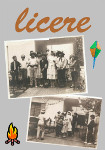Investigating the Occupation of the so Called “Tribes” in Leisure Spaces of the Seashore of Aracaju/SE
DOI:
https://doi.org/10.35699/1981-3171.2012.727Keywords:
Social Group, Sports, Leisure ActivitiesAbstract
This research is part of Project Orla that studies public spaces for leisure on the Atalaia seafront in the city of Aracaju/SE, which brings together a diverse number of spaces intended for bodily practices of sport and leisure, attracting people of different tastes and styles. Considering the location and structure, we sought to identify the interests of groups in relation to the space and the equipment. In qualitative/descriptive research were used as data collection instruments, the Semistructured interview and the Field Journal. The results show that the accessibility and the quality of structures are major factors of interest to the “tribes”.
Downloads
References
BOURDIEU, P. O Poder Simbólico. Rio de Janeiro: Bertrand Brasil, 2007. CHAUÍ, M. Convite à Filosofia. São Paulo: Ática, 2006.
COSTA, A. G.; PIRES, G. De L. Moda/indumentária em culturas juvenis: símbolos de comunicação e formação de identidades corporais provisórias em jovens de ensino médio. In: CONGRESSO SUL BRASILEIRO DE CIÊNCIAS DO ESPORTE, 3, 2006, Santa Maria/RS. Anais eletrônicos... Santa Maria: CBCE-RS, set/2006.
DEBORD, G. A Sociedade do Espetáculo. Rio de Janeiro: Contraponto, 1997.
DUMAZEDIER, J. Sociologia Empírica do Lazer. São Paulo: Perspectiva, 1974.
FERREIRA, A. B. de H. Miniaurélio Século XXI Escolar: o minidicionário da língua portuguesa. Rio de Janeiro: Nova Fronteira, 2001.
GOELLNER, S. V.; et al. Gênero e raça: inclusão no esporte e lazer. Porto Alegre: UFRGS, 2009.
________. et al. Pesquisa qualitativa na Educação Física brasileira: marco teórico e modos de usar. Revista da Educação Física/UEM. Maringá, v. 21, n. 3, p.1-30, 2010.
HACK, C.; PIRES, G. De L.. Lazer e mídia no cotidiano juvenil. In: ENCONTRO NACIONAL DE RECREAÇÃO E LAZER, 17, 2005, Campo Grande/MS. Anais eletrônicos... Campo Grande/MS: nov/2005.
HAUG, W. F. Crítica da Estética da Mercadoria. São Paulo: UNESP, 1997. MARCELLINO, N. C. (Org). Lazer e Cultura. Campinas: Alínea, 2007.
MINAYO, M. C. de S. Pesquisa social: teoria, método e criatividade. Petrópolis: Vozes, 2007.
PAIS, J. M. Tribos Urbanas: produções artísticas e identidades. São Paulo: Annablume, 2004.
PIRES, G. De L. Educação Física e o discurso midiático: abordagem crítico- emancipatória. Ijuí: Unijuí, 2002.
RIBEIRO, S. et al. MCSL – Lazer, Comunidade e Universidade: registro de uma ocupação pacífica. In: ENCONTRO NACIONAL DE RECREAÇÃO E LAZER, 15, 2003. Anais..., Santo André/SP: 2003.
TRIVIÑOS, A. N. S. Introdução à pesquisa em ciências sociais: a pesquisa qualitativa em educação. São Paulo: Atlas, 2006.
http://www.skatistaonline.com/category/cidade/aracaju, acesso em 30 de março de 2011.

